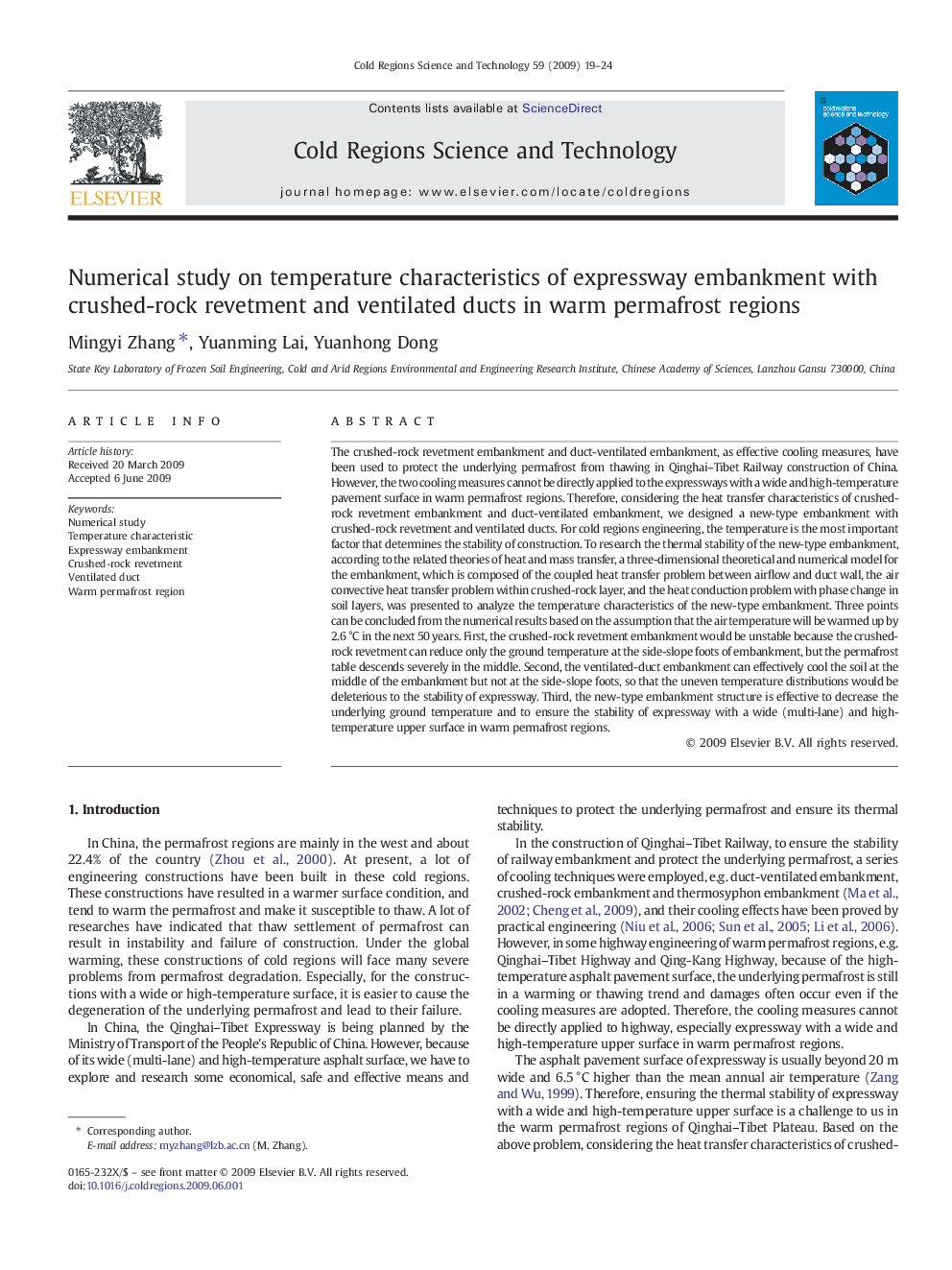| کد مقاله | کد نشریه | سال انتشار | مقاله انگلیسی | نسخه تمام متن |
|---|---|---|---|---|
| 4676436 | 1347759 | 2009 | 6 صفحه PDF | دانلود رایگان |

The crushed-rock revetment embankment and duct-ventilated embankment, as effective cooling measures, have been used to protect the underlying permafrost from thawing in Qinghai–Tibet Railway construction of China. However, the two cooling measures cannot be directly applied to the expressways with a wide and high-temperature pavement surface in warm permafrost regions. Therefore, considering the heat transfer characteristics of crushed-rock revetment embankment and duct-ventilated embankment, we designed a new-type embankment with crushed-rock revetment and ventilated ducts. For cold regions engineering, the temperature is the most important factor that determines the stability of construction. To research the thermal stability of the new-type embankment, according to the related theories of heat and mass transfer, a three-dimensional theoretical and numerical model for the embankment, which is composed of the coupled heat transfer problem between airflow and duct wall, the air convective heat transfer problem within crushed-rock layer, and the heat conduction problem with phase change in soil layers, was presented to analyze the temperature characteristics of the new-type embankment. Three points can be concluded from the numerical results based on the assumption that the air temperature will be warmed up by 2.6 °C in the next 50 years. First, the crushed-rock revetment embankment would be unstable because the crushed-rock revetment can reduce only the ground temperature at the side-slope foots of embankment, but the permafrost table descends severely in the middle. Second, the ventilated-duct embankment can effectively cool the soil at the middle of the embankment but not at the side-slope foots, so that the uneven temperature distributions would be deleterious to the stability of expressway. Third, the new-type embankment structure is effective to decrease the underlying ground temperature and to ensure the stability of expressway with a wide (multi-lane) and high-temperature upper surface in warm permafrost regions.
Journal: Cold Regions Science and Technology - Volume 59, Issue 1, October 2009, Pages 19–24